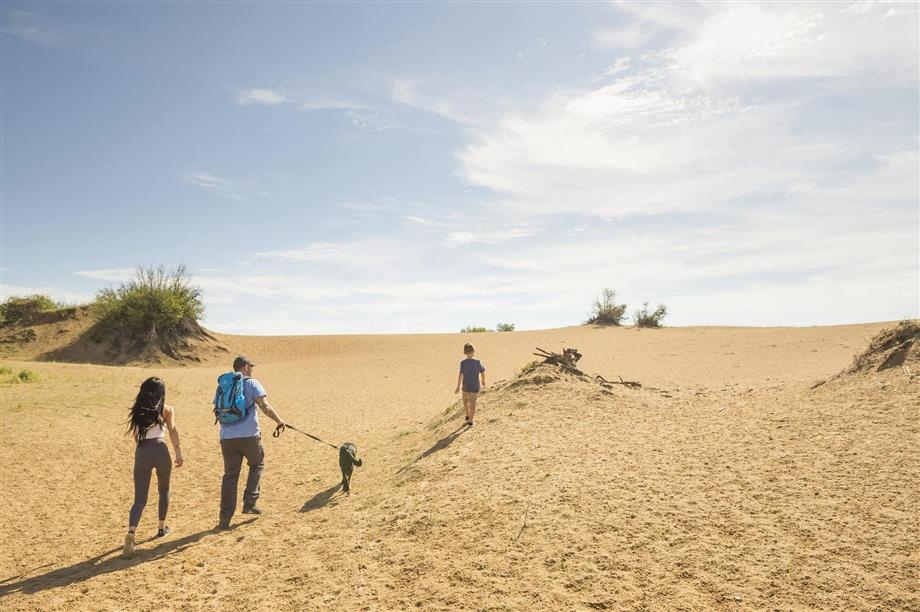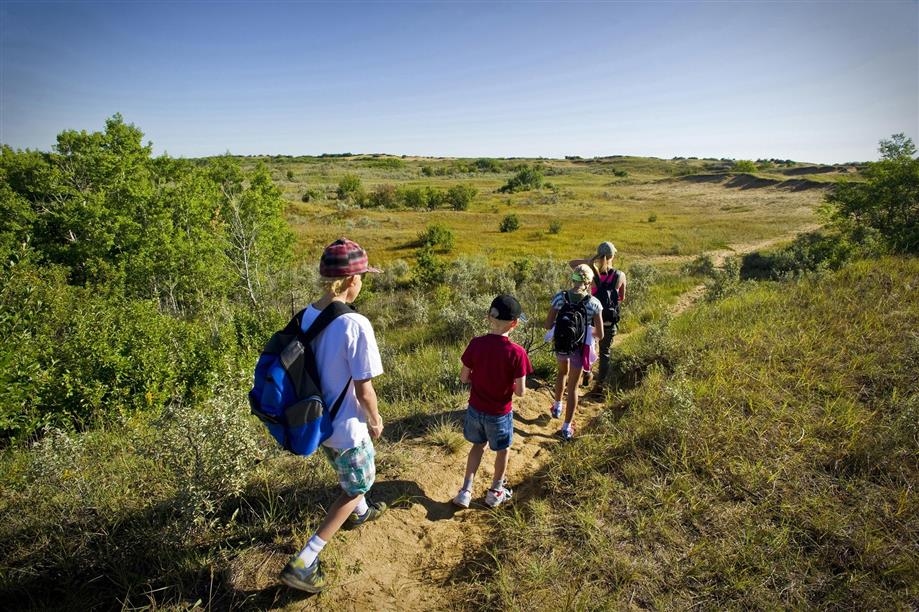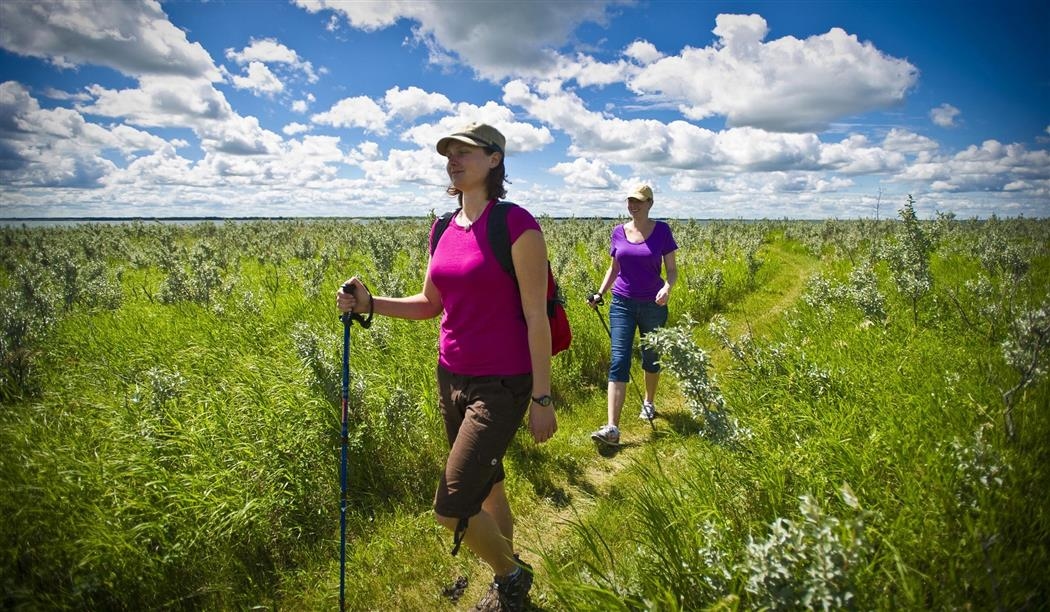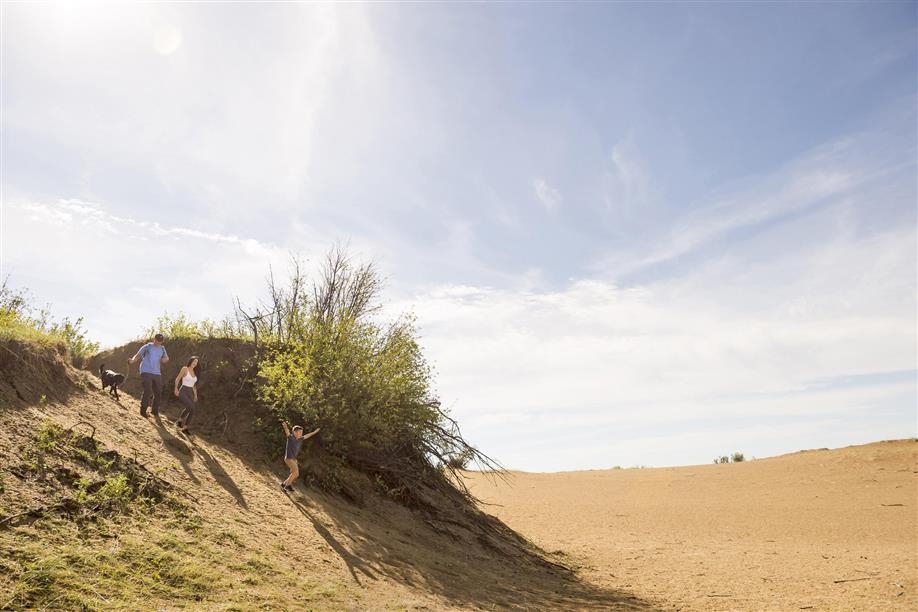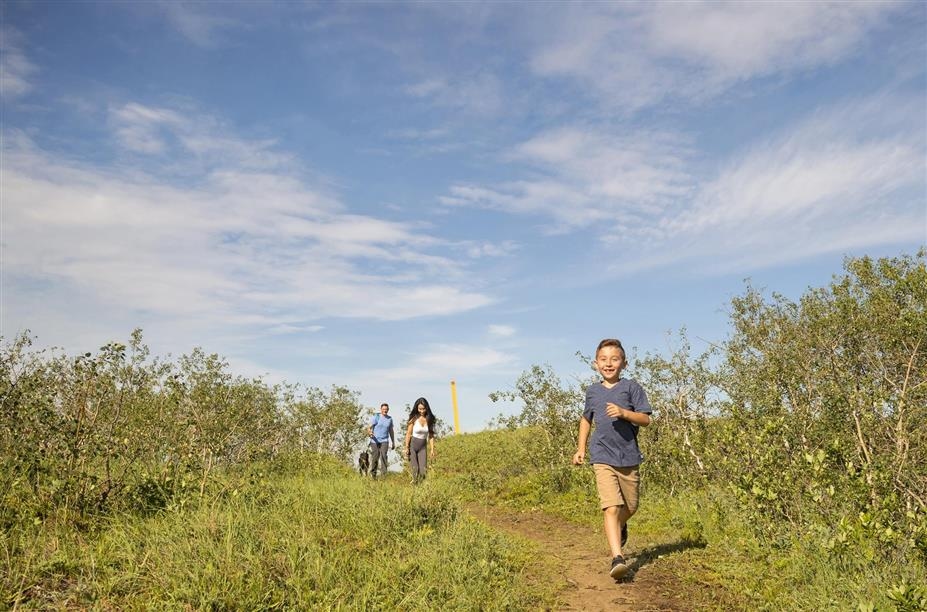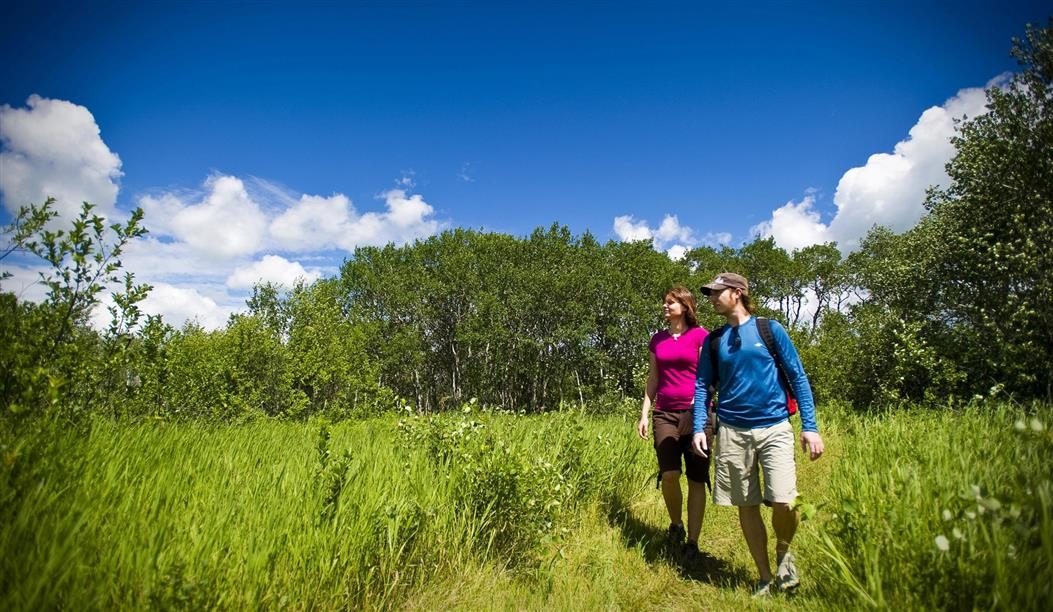Douglas Provincial Park Trails
Douglas Provincial Park, 11 km S of Elbow on Hwy 19.
The hiking only Cacti/Dune Trail provides visitors with access to large, picturesque sand dunes. The Cacti portion of the trail is 5 km and the Dune portion is 6.5 km. It is rated moderate to hard and can take 2-3 hours to complete, beginning across the highway from the park's entrance. Take ample drinking water and wear proper footwear.
The 2 km Sunset Hiking Trail is rated easy and is for hikers and cyclists. This short, looped trail offers a diverse range of habitats including moister meadows and large pockets of rich, lush woodland. Trail begins by sites 320 - 323.
The 12 km Wolf Willow Trail is part of the Trans Canada Trail with a 4km short loop and an 8km middle loop. It’s rated moderate and is for hikers and cyclists. The trail begins on the south side of the boat launch road.
The 2.5 km Juniper Trail is an enjoyable easy hike that can be done anytime of the day. This hiking only trail starts at the Dunes Nature Centre and displays how severe prairie conditions impact vegetation.
The 2 km Sunset Hiking Trail is rated easy and is for hikers and cyclists. This short, looped trail offers a diverse range of habitats including moister meadows and large pockets of rich, lush woodland. Trail begins by sites 320 - 323.
The 12 km Wolf Willow Trail is part of the Trans Canada Trail with a 4km short loop and an 8km middle loop. It’s rated moderate and is for hikers and cyclists. The trail begins on the south side of the boat launch road.
The 2.5 km Juniper Trail is an enjoyable easy hike that can be done anytime of the day. This hiking only trail starts at the Dunes Nature Centre and displays how severe prairie conditions impact vegetation.
Amenities
Canoeing
Hiking
Cycling


































